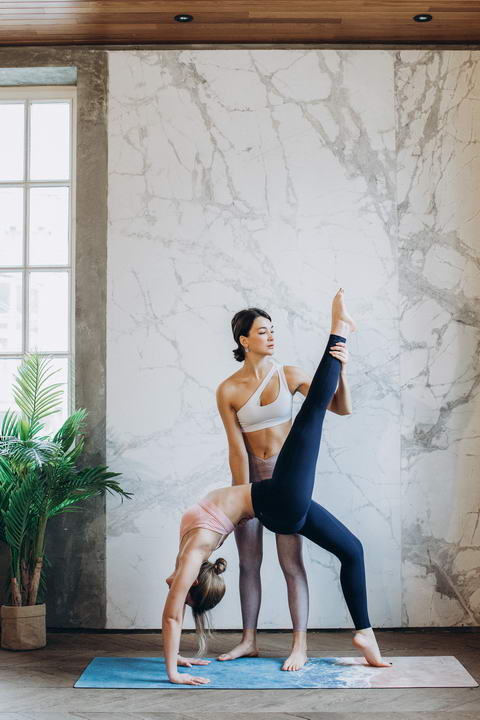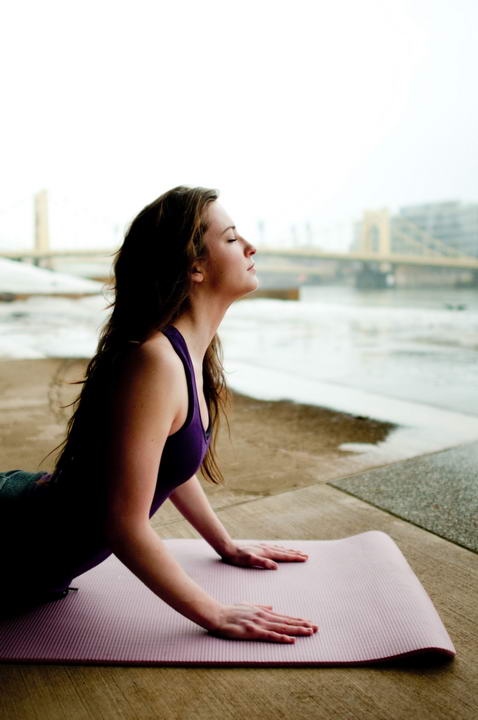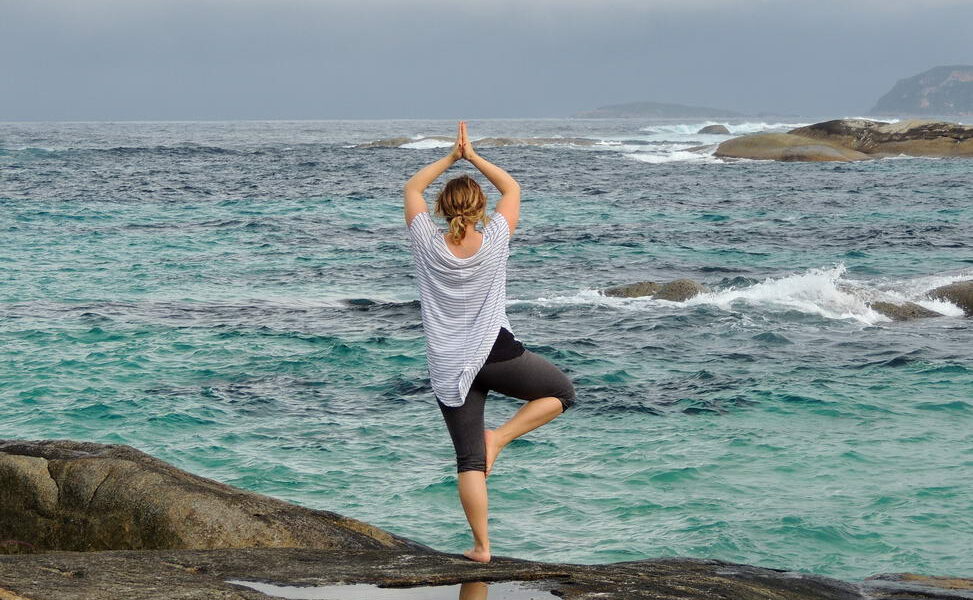Yoga for Beginner – FAQs 2
Embarking on a yoga journey can be an enriching experience, especially for new students who are just beginning to explore this ancient practice. Yoga, with its roots in ancient India, offers a harmonious blend of physical postures, breathing exercises, and mindfulness techniques designed to enhance overall well-being. This article is tailored for new students, providing a comprehensive introduction to the basics of yoga, the benefits it offers, and practical advice to help you start your practice with confidence. Whether your goal is to increase flexibility, reduce stress, or improve overall health, yoga presents a pathway to a more balanced and mindful life. Join us as we guide you through the essentials of yoga for beginner, setting the foundation for a fulfilling and transformative practice.
Explore Meditation Retreats & Wellness Retreats
Explore Yoga Retreats with Tejomaia.com

How long should yoga session be ?
The ideal duration of a yoga session depends on individual preferences, goals, and schedule. While some people may prefer shorter sessions of 15 to 30 minutes to fit into a busy day, others may enjoy longer sessions lasting 45 minutes to an hour or more for a more comprehensive practice. The key is to choose a duration that feels manageable and sustainable for you. Even a short session can provide significant benefits, including improved flexibility, strength, and mental clarity. Consistency is more important than session length, so aim to practice yoga regularly, whether it’s daily, a few times a week, or weekly. Ultimately, the best duration for a yoga session is one that allows you to fully engage with your practice and reap its many physical, mental, and emotional rewards.
Yoga for beginner – Is yoga just stretching ?
While yoga does include stretching, it encompasses much more than just stretching. Yoga is a holistic practice that integrates physical postures (asanas), breathing techniques (pranayama), meditation, and relaxation to promote overall health and well-being. While stretching is an essential component of yoga, the practice also focuses on building strength, improving balance, enhancing flexibility, and cultivating mindfulness. Yoga poses not only stretch and lengthen muscles but also engage and strengthen them, leading to increased muscle tone and stability. Additionally, yoga encourages awareness of breath and promotes mindful movement, fostering a deeper connection between mind and body. Moreover, yoga offers mental benefits such as stress reduction, improved concentration, and emotional balance. Therefore, while stretching is a fundamental aspect of yoga, the practice encompasses a wide range of physical, mental, and emotional elements that contribute to holistic health and wellness.

Does yoga hurt at first?
It’s not uncommon for beginners to experience some discomfort or muscle soreness when starting yoga, especially if they are not accustomed to physical activity or if they are trying new movements and stretches. However, yoga should not cause sharp or intense pain. Sensations of tightness, stretching, or mild discomfort are normal, particularly in areas of the body that are tight or underused. It’s essential to listen to your body, honor its limitations, and avoid pushing yourself into positions that feel painful. Practicing mindfulness and focusing on the breath can help manage discomfort and increase awareness of the body’s sensations. As you continue to practice yoga regularly, your body will gradually adapt, and you may find that any initial discomfort diminishes over time. If you experience persistent or severe pain during yoga, it’s important to consult with a qualified instructor or healthcare professional to ensure that you are practicing safely and effectively.
Yoga for beginner – what not to do during yoga ?
During yoga practice, it’s essential to prioritize safety and listen to your body. Here are some key things to avoid:
- Overexertion: Avoid pushing yourself too hard or forcing your body into poses beyond your current level of flexibility or strength. Respect your body’s limits and practice within your comfort zone to prevent injury.
- Ignoring pain: Never ignore pain during yoga. If a pose causes sharp or intense discomfort, back off immediately and modify the pose or ask for assistance from a qualified instructor.
- Holding your breath: Maintain a steady and controlled breath throughout your practice. Avoid holding your breath, as this can increase tension and restrict oxygen flow to the muscles.
- Comparing yourself to others: Yoga is a personal practice, and everyone’s body is unique. Avoid comparing yourself to others in the class and focus on your own journey and progress.
- Judging yourself: Be kind and compassionate towards yourself during yoga practice. Let go of self-judgment and perfectionism, and instead cultivate self-acceptance and mindfulness.
- Skipping warm-up: Always start your yoga practice with a gentle warm-up to prepare your body for movement and prevent injury. Avoid jumping straight into advanced poses without properly warming up your muscles and joints.
- Rushing through poses: Take your time with each pose, focusing on proper alignment, breath awareness, and mindful movement. Avoid rushing through poses or sacrificing form for the sake of completing a sequence.
By being mindful of these considerations, you can create a safe and enjoyable yoga practice that supports your physical, mental, and emotional well-being.
Is yoga religious?
Yoga itself is not inherently religious, but it does have roots in ancient spiritual traditions. Originally developed in India thousands of years ago, yoga was practiced as a spiritual discipline aimed at achieving union with the divine. While some forms of yoga incorporate spiritual elements such as chanting, meditation, and philosophical teachings, many modern yoga practices have been secularized and adapted for use in a variety of cultural and religious contexts. Today, yoga is primarily regarded as a holistic system for promoting physical, mental, and emotional well-being, accessible to people of all backgrounds and beliefs. While individuals may choose to integrate spiritual aspects into their yoga practice according to their personal beliefs, yoga can also be practiced purely as a form of exercise and mindfulness without any religious connotations. Ultimately, the spiritual or religious significance of yoga is a matter of personal interpretation and preference.

Yoga for beginner – How often should I do yoga?
The frequency of your yoga practice depends on your individual goals, schedule, and physical condition. For beginners, starting with 2-3 sessions per week allows for consistency while allowing the body time to adapt and recover between sessions. As you become more experienced and comfortable with the practice, you may choose to increase the frequency to 4-5 sessions per week or even daily practice if desired. However, it’s essential to listen to your body and avoid overdoing it, as rest and recovery are crucial for preventing injury and maintaining balance. Ultimately, the best approach is to establish a routine that feels sustainable and enjoyable for you, whether that means practicing yoga daily, several times a week, or less frequently. The key is consistency and finding a balance that supports your overall well-being and fitness goals.
Yoga for beginner – What is the history of yoga?
Yoga has a rich and ancient history that dates back thousands of years to the Indus-Sarasvati civilization in Northern India. The practice of yoga is mentioned in ancient texts such as the Rigveda, which dates back to around 1500 BCE, and the Upanishads, which were written between 1000 and 500 BCE. The philosophical foundations of yoga were further developed in the Yoga Sutras of Patanjali, composed around 400 CE, which outlined the eight limbs of yoga as a path to spiritual enlightenment. Over the centuries, various schools of yoga emerged, including Hatha yoga, which emphasized physical postures and breath control, and Bhakti yoga, which focused on devotion and prayer. Yoga spread to the West in the late 19th and early 20th centuries, gaining popularity as a system of physical exercise and spiritual practice. Today, yoga is practiced by millions of people worldwide and continues to evolve and adapt to modern lifestyles while remaining rooted in its ancient traditions.
Explore Meditation Retreats & Wellness Retreats
Explore Yoga Retreats with Tejomaia.com


